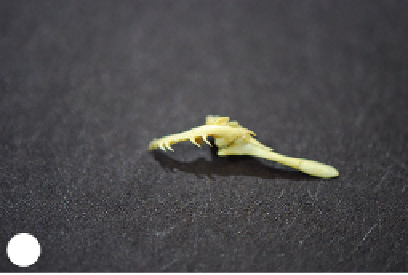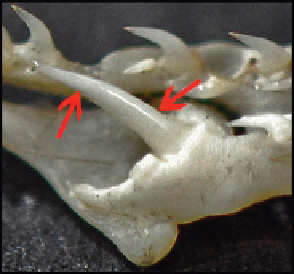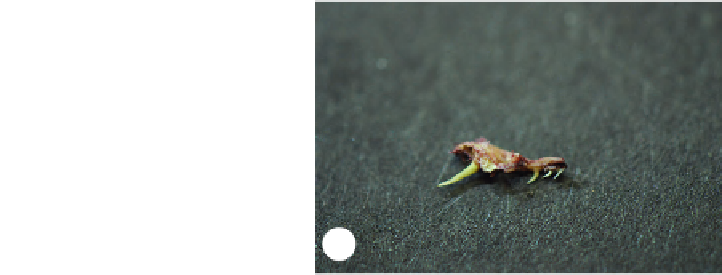Biology Reference
In-Depth Information
(A)
(C)
(B)
(D)
(E)
Plate 4.79
(A-E) Posterior maxillae of the hognose snakes (
Heterodon
spp.).
Some
authors have speculated, without confirmative evidence, that the enlarged posterior maxillary
teeth of these heterodontine dipsadids are used to deflate air from toads (
Bufo
spp
.
), as these
amphibians use inflation as an antipredator mechanism. These teeth are probably too short for
this theoretical function, but this speculation is worthy of further study. These enlarged teeth
are without grooves, but may facilitate entry of Duvernoy's secretion into inflicted wounds.
(A and B) Enlarged posterior maxillary teeth of the Mexican hognose snake (
H. nasicus
kennerlyi
).
Note the markedly enlarged, ungrooved, smooth posterior maxillary tooth (arrows;
AMNH #58234).
(C) Enlarged posterior maxillary teeth of
H. simus
, South Carolina, USA.
As in other
Heterodon
spp., there is a diastema between the notably enlarged, ungrooved posterior
maxillary teeth, and the smaller recurved anterior teeth (AMNH #38165).
(D and E) Enlarged posterior maxillary teeth of the Eastern hognose snake (
H.
platirhinos
).
Note the diastema between the recurved, smaller anterior maxillary teeth, and the
enlarged, ungrooved maxillary teeth (arrows; AMNH #63590).






